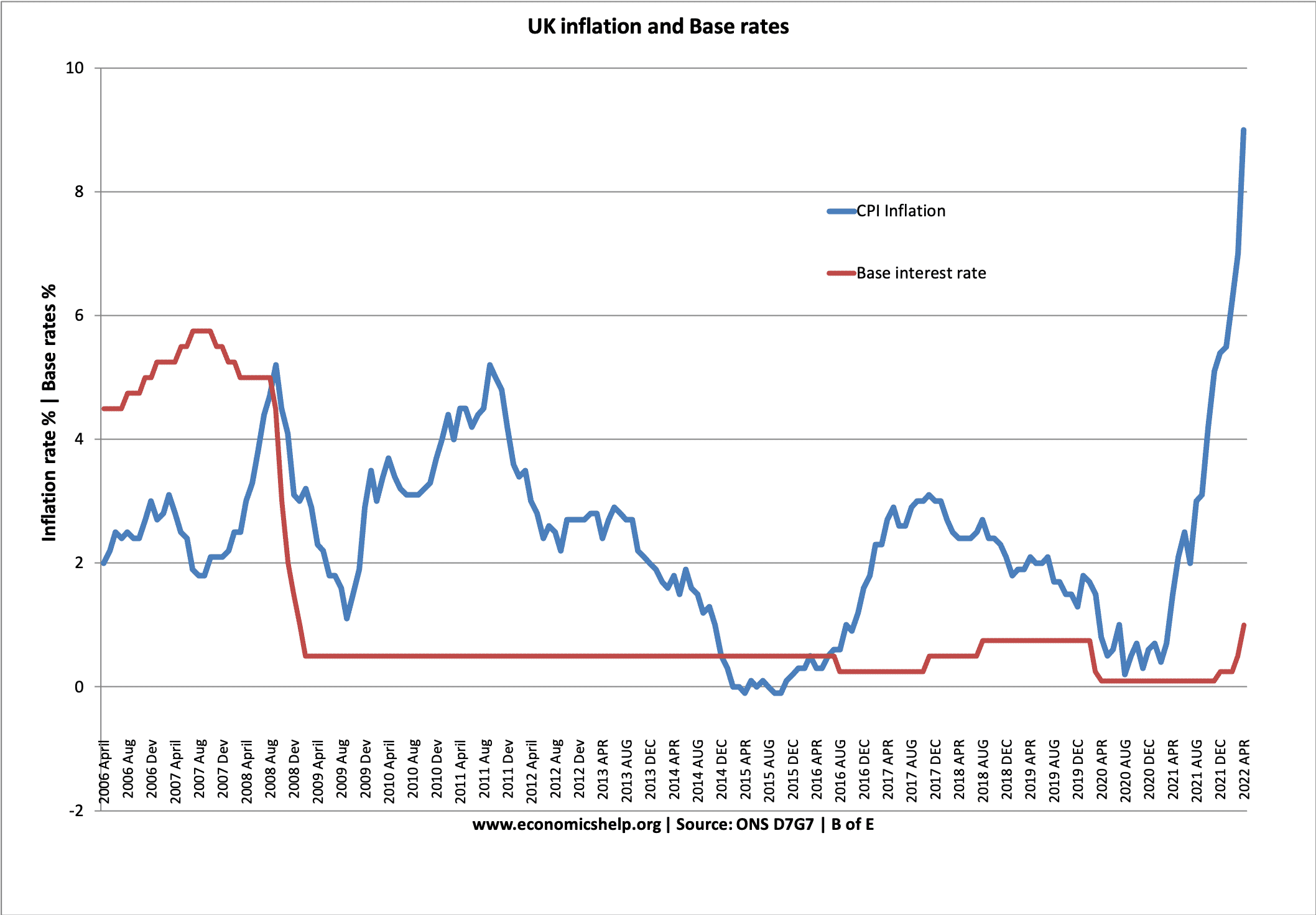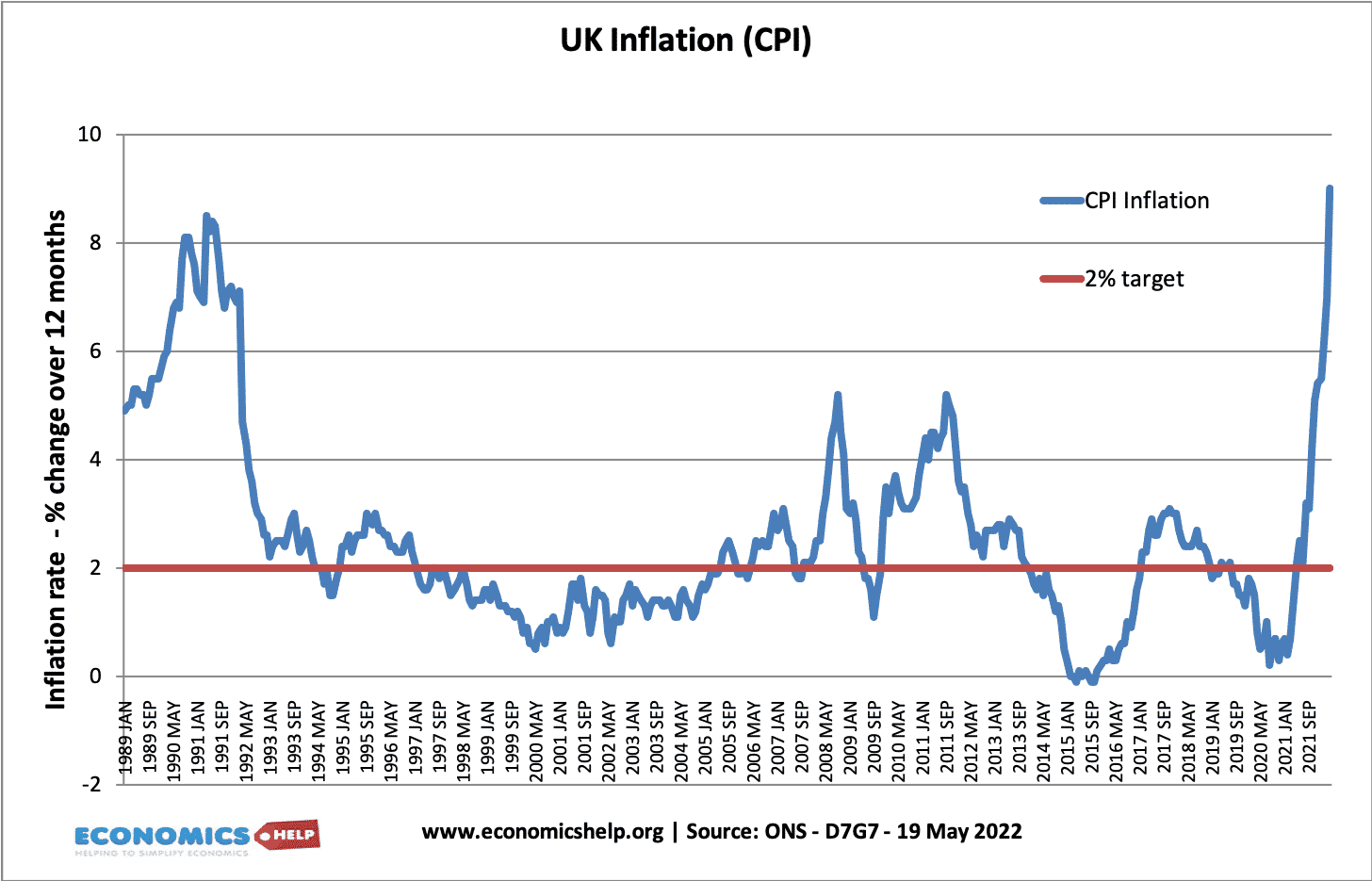Methods to Control Inflation
Different Ways to Control Inflation in UK
The government and/or the central bank often regulate inflation. Monetary policy is the principal strategy employed (changing interest rates). However, there are a number of techniques to limit inflation in theory, such as:
Monetary policy - Weaker economic demand and hence lower economic growth and inflation result from higher interest rates.
Control of the money supply - Monetarists contend that since the money supply and inflation are closely related, inflation may be reduced by regulating the money supply.
Supply-side policies: measures to make the economy more efficient and competitive while reducing long-term costs.
Fiscal policy: A higher income tax rate may lessen pressures on demand, expenditure, and inflation.
Controlling salaries and prices in an effort to curb inflationary pressures is a theoretically viable option. However, because they are mostly ineffective, they are not frequently employed.
Monetary Policy
It is possible for demand to outpace the economy's ability to provide it at a time of strong economic expansion. As a result of businesses raising prices in response to shortages, inflationary pressures are created. This inflation is known as demand-pull inflation.
1. Interest rates could be raised by the central bank in reaction to inflation.
2. Borrowing becomes more expensive and saving becomes more appealing with higher interest rates.
Homeowners will have to make higher mortgage payments, which would leave them with less money to spend.
3. Consequently, households will be less able and motivated to spend.
4. Businesses will spend less because corporations won't be as likely to borrow to finance investments.
UK Inflation and interest rates

In 2022, interest rates were raised to counter the inflationary spike. However, compared to the magnitude of inflation, the increase in interest rates is rather little. This is due to the Bank of England's expectation that the inflation will only be transient.
Inflation target

Many nations have an inflation target as part of their monetary policy (the UK's is 2 percent, plus or minus 1). The claim is that lowering inflation expectations will assist if people think the inflation objective is credible. It is simpler to manage inflation when expectations are low.
Nations have also made central banks' ability to determine monetary policy autonomous. The claim is that a central bank that is independent from political influences will avoid blunders like lowering interest rates before of an election in an effort to win over voters.
Budgetary Policy
The government can raise taxes (such income tax and VAT) and reduce spending to lower inflation. This serves to lower demand in the market and improves the government's fiscal condition.
Additional Measures to Lower Inflation
1. Lower your expectations.
Inflation expectations have a significant role in determining inflation throughout time. If consumers anticipate inflation in the upcoming year, businesses will raise prices and employees will demand more pay. Higher inflation often results from this anticipation. It will be simpler for the Central Bank and the government to do their jobs if they can successfully lower expectations by issuing credible warnings to limit inflation.
2. Price restraints
As a result of inflation, businesses will strive to raise prices as much as possible in an effort to stay profitable and offset growing expenses. Price limits are one strategy to combat this "profit-push" inflation. Here is where the government places restrictions on price growth.
For instance, after winning the election in 1973, President Nixon reinstated the price freeze that had been implemented in 1971. Although the price freezes briefly enjoyed political favour, they ultimately fell flat. When price controls lifted, businesses limited supply, and the previously repressed inflation spiked back up. It is important to remember, meanwhile, that price restrictions throughout the war successfully lowered inflation.
3. Wage Management
Limiting pay growth can aid in containing inflation if wage inflation is to blame (for instance, if strong unions are negotiating for higher real wages). Reduced wage growth will lower business expenses and result in less economic overproduction.
However, it can be challenging to manage inflation through income programmes, particularly if the unions are strong, as the UK experienced in the 1970s. Additionally, wage regulation needs broad economic cooperation, but if businesses are struggling to find workers, they will go above and beyond government salary limits to do so.
4. Money-making
By limiting the amount of money in circulation, monetarism aims to reduce inflation. According to monetarists, there is a direct correlation between the money supply and inflation. You should be able to reduce inflation if you can manage the expansion of the money supply. Monetarists would emphasise measures like:
higher rates of interest (tightening monetary policy)
lowering the deficit budget (deflationary fiscal policy)
Governmental money creation under control
In reality, however, there is a weaker connection between the money supply and inflation.
5 Supply-Side Regulations
Cost increases and ongoing uncompetitiveness are frequently the root causes of inflation. Supply-side initiatives may increase economic competitiveness and lessen the effects of inflationary pressures. For instance, more accommodating labour markets may aid in lowering inflationary pressure.
However, supply-side measures might take a while to work and are ineffective against demand-driven inflation.
